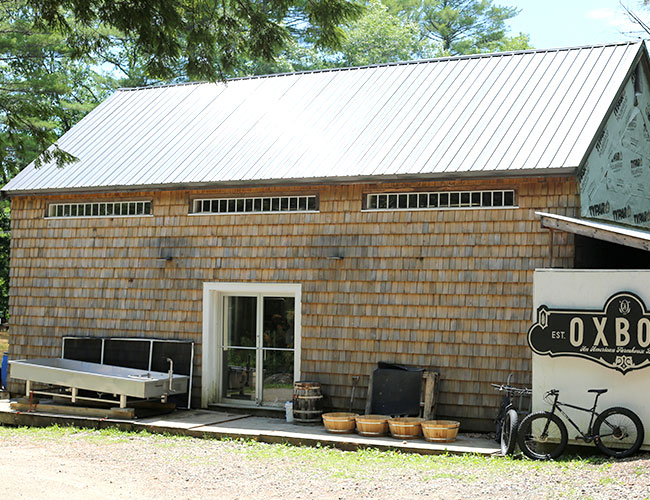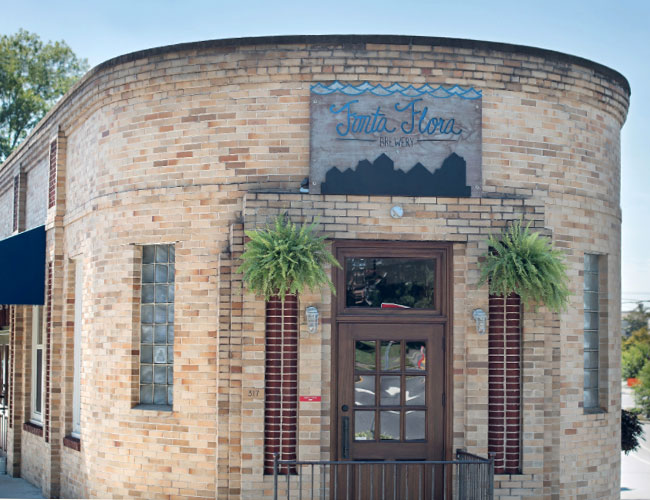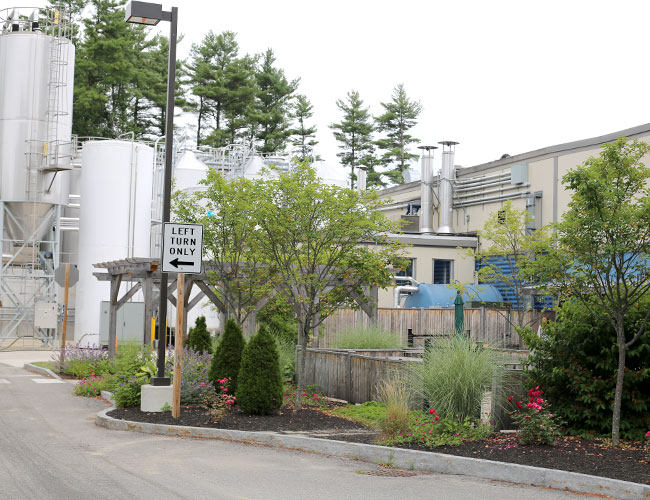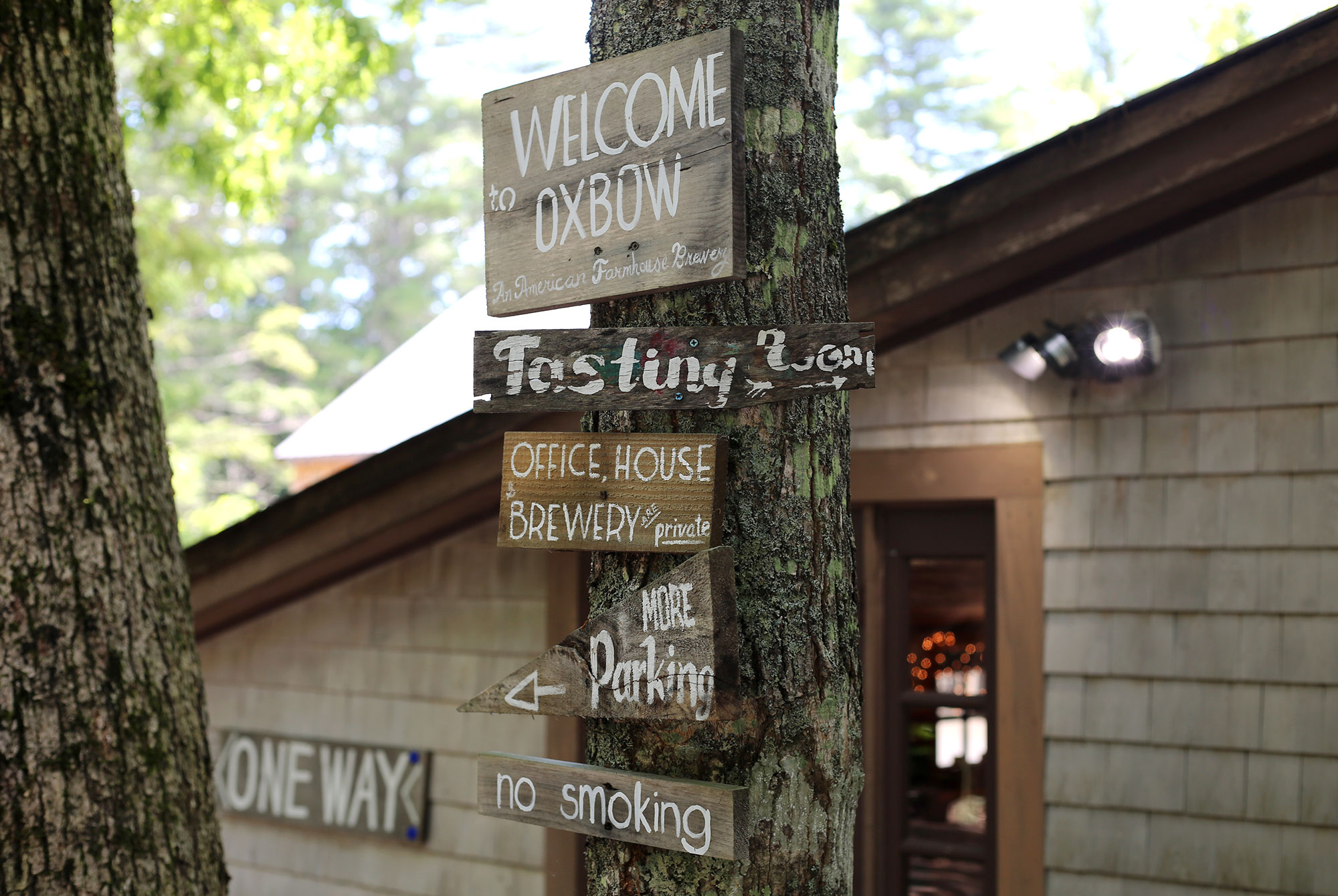Shop
Contextualizing the American Farmhouse Ale
Nailing the style with help from Oxbow, Jester King, Fonta Flora, and Brasserie De La Senne.
Travel the back roads of coastal Maine to a town called Newcastle, past a spot of land named “Cowshit Corner” (there’s a sign), and you’ll find Oxbow Brewing, which calls itself an American farmhouse brewery. These places, and others like it, inspire a harkening back to the European hills and countrysides where farmhouse ales — also called saisons — were born.
The romantic connotation of farmhouse ales to farmhands enjoying pints in the summer sun on some Wallonian countryside is both true and untrue. At one time, these beers were enjoyed on the farms of France and French-speaking Belgium at the end of a long, hot day, but today the terms have come to mean something else. But what that is, exactly, is up for debate.
“If you ask ten brewers, you’ll probably get ten different answers,” said Jeff Stuffings of Austin, Texas’s Jester King Brewery.
If there is a temptation to call every beer with some dryness or some funk or some spice a farmhouse or saison, it’s because of what Stuffings called a “bastardization” of the terms. That’s because today’s definition — light, dry beers with additional spicing — encompass a wide array of beers.
Still other brewers differentiate between “farmhouse” and “saison.”
“Farmhouse is the tree,” said Tim Adams of Newcastle, Maine’s Oxbow Beer. “And I’d say a large branch is called saison.”

Oxbow Beer’s Newcastle brewery.
We know the romanticized version of how farmhouse beers came into existence. The saisonniers (essentially, “seasonal workers”) would lend their skills to the farmhouses in the southern part of Belgium and Northern France. After a grueling day of field work, they’d need something light to satisfy their thirst. Enter the farmhouse ale, each one unique to the farm on which it was served. This was less a style than simply the beer they brewed.
But although our vision tends to imagine these beers as rustic anachronisms — all world-class and delicious — to be enjoyed on a bale of hay in front of a setting sun, the reality is different. According to the authoritative text Farmhouse Ales by Phil Markowski, “In reality, these homemade ales were extremely varied in quality and taste.” They were truly distinct, but couldn’t really be categorized.
In America, we tend to place things into neat little categories. But placing the Franco-Belgian version in a strict category would be a mistake. Yvan De Baets, one of the world’s great experts in farmhouse ales and the owner of Brasserie De La Senne in Brussels, believes farmhouse ale isn’t necessarily a style but “rather an interpretation of the style.”
“The term [farmhouse ale] obviously comes from the U.S., and I think it relates to some images Americans have of Old Europe, especially when they go to the countryside,” he wrote via e-mail. “It’s understandable, of course. I suppose it gives some people a mental comfort with a sort of ‘window of flavors’ those type of beers are having in common.”
Todd Boera, founder of Fonta Flora Brewery in Morganton, North Carolina, agrees. “Stylistically, [in America] we’re really just borrowing the idea of French and Belgian styles,” he said.

Fonta Flora Brewery. Pic by Fonta Flora.
Given the significant shade cast by the large Sequoia that is the farmhouse ale tree, a distinct definition is hard to pin down. The reality lies somewhere in between a modern twist and a traditional take. Oxbow’s Tim Adams says that the American Farmhouse Ale is an homage grown out of respect to the perfected styles of the entire Franco-Belgian region, from the farmhouse ales to the Lambics, the gueuze to the Flanders Reds. The modern farmhouse combines the best of American brewing with the techniques and flavors of these ancient styles.
“It’s interesting to see what’s happening with American beers when you put them into an historical and geographical context,” he said. “With Oxbow, we’re taking these influences from Belgian beers and combining them into American farmhouse ales.”
Stuffings mirrored those thoughts, saying his outfit is “heavily inspired and [has] borrowed principles [from the European masters], but is really trying to do something that’s our own.”
But there’s still some adherence to the traditional methodologies, focused largely on accessibility of localized ingredients and terroir.
“We have certain principles that have translated across the ocean,” Stuffings said. “We try to stay true to that spirit.”
Jester King, he says, focuses on local agriculture, and surrounding resources like well water, grain, and hops that, if not grown there, are aged in their barn. They also ferment their products with their own yeast cultures and microorganisms from their property. Most importantly, there’s a focus on subtlety, which runs directly counter to the American craft beer scene, which seems to increasingly express itself through extremes, as well as the fallacy that more — hops, adjuncts, time in barrel — equates to better. There’s a complexity in Jester King beers that’s a product of simplicity.
“That’s one of our defining principles,” said Stuffings. “[At Jester King], there are principles of restraint and subtlety. Despite the debate of true origin of the style, there’s a functionality in that they are historically purposed for nourishment and hydration. I think these are the most interesting and drinkable beers. They are every bit as complex, and harder to appreciate. The subtlety, the restraint are paradoxically the key to complexity.”
If there is a commonality among the style we call American farmhouse, it’s drinkability — a term that has more to do with ease-of-drinking, palatability, and a coexistence of balanced ingredients than just literal consumption. It’s a major tenet of the hard-to-grasp style, and almost all American farmhouse brewers seek a lack of ostentation and complexity-through-simplicity. At De La Senne, De Baets also favors this take and seems concerned with other American styles that border on extreme.
Said De Baets, “Brewers should always remember that a beer, whatever its style, should always be easy to drink, especially the family of the ‘farmhouse’ ones.”
That said, he considers some of the best interpretations of the traditional style to be found in America. He points to places like Russian River, Allagash, De Garde, Crooked Stave, and Tired Hands, as well as the outfits run by Adams and Stuffings.

Allagash Brewing in Portland, Maine.
Are there other commonalities? It’s charming to believe that American Farmhouse Ales are a product of place, that the beers are inspired by the place and the place is symbiotically inspired by the beer, but the quality of beer and the setting seem to be mutually exclusive. Aside from the breweries featured in this story, breweries like Vermont’s Hill Farmstead and New York’s Plan Bee are crafting unique interpretations of the style in a rural setting; on the other end of the spectrum, both Adams and Stuffings pointed to Allagash and Sante Adarius Rustic Ales as examples of exemplary modern producers of the style, both of which are located near urban centers. Simply put, location doesn’t matter.
“What’s the real relationship between the type of building in which a beer is brewed and a style?” asked De Baets. “Is a super clean pilsner brewed in a genuine farm a farmhouse beer? Can a genuine 19th Century Saison be brewed in a ‘modern’ plant, with no pigs or cows running around?”
“There are people making exceptional farmhouse style ales in warehouses,” asserted Adams, “and people brewing crappy farmhouse ales in farmhouses. It isn’t linked to place. The things we do at Oxbow — brew in an authentic setting in a rural area, use well water, surrounded by farming operations that help produce ingredients — help make our beer that much more special and unique. We’re drawn to the farmhouse setting, but it’d be foolish to think that it’s related to the quality of the beer.”
For Boera, who calls Fonta Flora an Appalachian Farmhouse Brewery, the property on a farm is a combination of luck and intent.
“I really lucked out making this whole farmhouse location a reality,” he said. “How many people have the opportunity to put a brewery on a farm? It’s certainly unfair to say some people don’t count because they’re not on a farm, but for me it sweetens the deal to be on a farm with access to local ingredients. That’s the heart and soul.”
All things considered, what comes to rest inside the bottle ends up being more important than location or ingredients or process. The end product is paramount, and finding the right combination of ingredients, mouthfeel, and fermentation character makes for a true American farmhouse ale.




